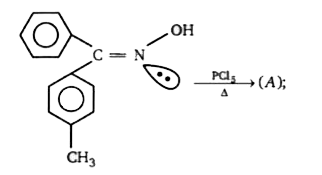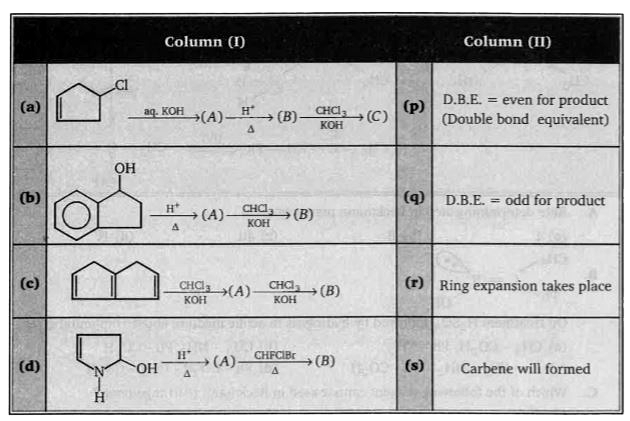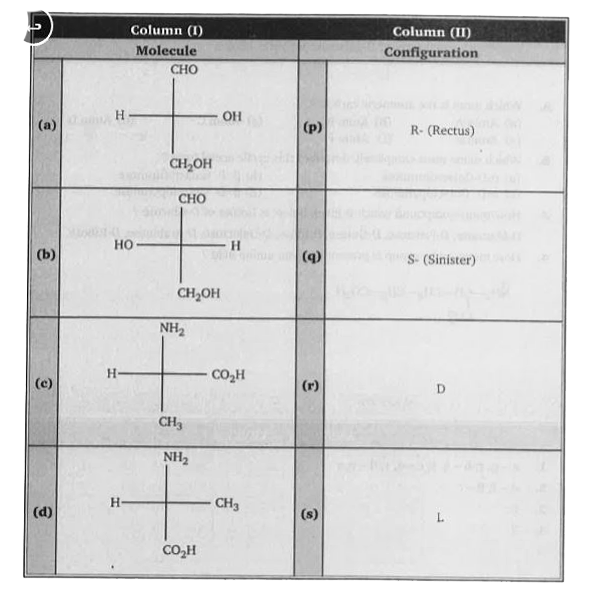Given is mechanism of Beckmann rearrangement.


Product (A) of the above reaction is : Solution in Kannada




The correct Answer is:B
Anti alkyl group migrate.
Topper's Solved these Questions
- CARBENE AND NITRENE Book:MS CHOUHANChapter:CARBENE AND NITRENE Exercise:LEVEL-2
Explore 5 Videos
- CARBENE AND NITRENE Book:MS CHOUHANChapter:CARBENE AND NITRENE Exercise:LEVEL-2
Explore 5 Videos
- BIOMOLECULES Book:MS CHOUHANChapter:BIOMOLECULES Exercise:LEVEL - 2
Explore 5 Videos
- CARBOXYLIC ACID AND THEIR DERIVATIVES Book:MS CHOUHANChapter:CARBOXYLIC ACID AND THEIR DERIVATIVES Exercise:LEVEL-2( SUBJECTIVE PROBLEMS)
Explore 1 Video
Similar Questions
Match the column I and II.

View SolutionMatch the column I and II.

View SolutionMatch the colume (I) and Column (II). (Matrix)

View Solution
(Y) is including stereoisomers. Value of (X+Y) will be
View SolutionBeckmann Rearrangement
View SolutionGiven is mechanism of Beakmann rearrangement.

Rate determining steo=p in Beckmann rearrangement :
View SolutionGiven is mechanism of Beakmann rearrangement.

Which of the following reagent cannot used in Beckmann rearrangement ?
View SolutionThe given is mechanism of Beckmann rearrangment.

Reagent cannot be used in Beckmann rearrangement is
View SolutionThe given is mechanism of Beckmann rearrangment. Rate determining step in the Beckmann rearrange- ment is
View SolutionThe given is mechanism of Beckmann rearrangment. Product (X) is
View SolutionIn organic chemistry various reactions take place by rearrangements. These rearrangements can be classified on the basis of migratory group and its nature. One of the well-known rearrangement is the formation of N-substituted amides by rearrangement of aldoximes or ketoximes. This is known as Beckmann rearrangement. It is catalysed by various acidic reagents. The mechanism of this reaction is given as product, The product formed is :
View SolutionIn organic chemistry various reactions take place by rearrangements. These rearrangements can be classified on the basis of migratory group and its nature. One of the well-known rearrangement is the formation of N-substituted amides by rearrangement of aldoximes or ketoximes. This is known as Beckmann rearrangement. It is catalysed by various acidic reagents. The mechanism of this reaction is given as Product, The final product is :
View SolutionBeckmann|Rearrangement
View SolutionCurtius Reaction with Examples, Schmidt Reaction with Examples, Beckmann Rearrangement with Examples and Abnormal Beckmann Rearrangement
View SolutionWhat is Beckmann Rearrangement ? Explain its mechanism with example .
View SolutionBeckmann rearrangement.
View Solution